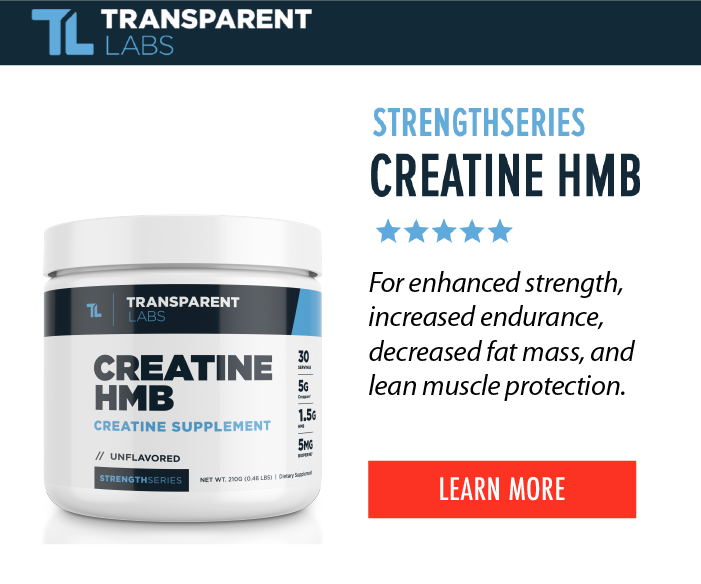Compound vs. Isolation Exercises: Which Are Best for Muscle Growth?
When it comes to muscle growth, there can be some confusion about which exercises are best. Should you focus on compound exercises that work multiple muscle groups or should you dedicate your time to isolation exercises to sculpt and build specific muscles?
The answer is: both are vital for a balanced strength training routine. Compound exercises should be the foundation of your workouts, but isolation exercises also have a significant part to play in building muscle.
In fact, limiting yourself to compound exercises could restrict your muscle growth in the long run. We'll dive more into why in this blog, and we'll talk about how to use the best combination of compound and isolation exercises to build maximum muscle.
What is the Difference Between Compound and Isolation Exercises?
Compound exercises are multi-joint movements that work multiple muscle groups simultaneously. Isolation exercises, on the other hand, are single-joint movements that target one muscle group at a time.
Examples of compound exercises include:
Squats
Deadlifts
Pull-ups
Push-ups
Examples of isolation exercises include:
Bicep curls
Triceps extensions
Leg extensions
Calf raises
The body has hinge joints like the elbows and knees that don't have a wide range of motion; they are designed to flex and extend. So a single joint (aka isolation) exercise makes sense when you're trying to target muscles around these joints like the biceps and triceps.
Although you utilize smaller muscles like biceps and triceps in compound movements indirectly, isolation exercises target them as prime movers. The “prime mover” or “primary mover” is (as the name suggests) the muscle group primarily responsible for the movement of an exercise.
“Secondary movers” are muscle groups that contribute to the movement and provide stability. For example, the chest is the primary mover in a bench press, while the shoulders and triceps are secondary movers.
What are the Benefits of Compound Exercises for Muscle Growth?
Compound exercises are often touted for their ability to help you build strength and muscle mass quickly, and they certainly have a lot to offer. Here are some of the major benefits of compound exercises.
Saving Time
Compound movements can save you time when you have a limited schedule. And let's be honest, most people would prefer to spend the least time necessary in the gym – there are plenty of other demands on your time.
Since compound moves engage multiple muscle groups simultaneously, you can train more efficiently with fewer exercises.
Compound moves will help you achieve results in less time, especially during the early stages. If you are new to lifting weights, haven't been training consistently, or are just beginning a strength training routine you will see growth and strength in all muscle groups involved in compound exercises. (We’ll talk below about how this changes over time.)
Functional Fitness
The concept of "functional fitness" has become a popular idea for training routines. This is the principle that training your body with routines that mimic movements of everyday life will make you stronger and more agile from a practical, quality of life standpoint.
Compound exercises are some of the best moves for functional fitness because they mimic everyday motions like bending down, lifting something heavy, or pushing something away.
If you think about it, the squat and deadlift are basic movements you constantly use, whether that's bending down to pick something up off the ground or sitting down in a chair.
In contrast, the motion of elbow extension you perform when doing a seated triceps extension (an isolation exercise) isn't something you do regularly throughout your day.
Athletic Performance
When it comes to building strength for sports-related activities, compound exercises are key. Whether you're a high-level athlete or playing on a team is your weekend hobby, you want to be training the movements you need to excel in your sport.
Similar to the principle of functional training, compound movements help better train you for the movements of a game or competition: jumping, sprinting, pushing, or pulling.
Compound exercises and power lifts are ideal for athletic training for agility, power, and speed.
Building Strength
As we mentioned, compound exercises are some of the best moves for building strength. In addition, utilizing multiple muscle groups enables you to lift heavier weights and challenge your muscles with a greater load.
Engaging more muscles in compound exercises can also boost testosterone levels and growth hormone production. These two hormones play an important role in muscle growth and keep you in an anabolic (muscle building) state.
Core Training and Posture
Your core includes the muscles in your midsection that help stabilize your spine and keep your body upright. This isn't just your six-pack; your core includes deep stomach muscles like the transverse abdominis, obliques, hips, and lower back.
Compound movements require you to stabilize your spine, which is great for core strengthening. This is especially true for exercises like the squat, deadlift, pull-ups and push-ups.
Not only will training your core help to improve your posture, but it will also help you perform better in other exercises and reduce your risk of injury.
What are the Benefits of Isolation Exercises for Muscle Growth?
There aren't necessarily drawbacks to performing compound exercises, but if you limit yourself to only compound moves, you'll miss out on the benefits of isolation exercises.
When your workout routine only includes compound moves, you put your joints at greater risk of overuse injuries, and your body needs more rest between workouts. This can lead to less total training frequency and volume, and as you may know, total training volume is key for building muscle.
Here are some of the benefits of including isolation exercises in your routine.
Target Smaller Muscles
One of the main benefits of isolation exercises is targeting smaller muscles that may get neglected with compound exercises.
For example, the biceps are a small muscle group relative to your legs or back. So while doing pull-ups or rows will undoubtedly train your biceps, you're not really able to give this muscle group the attention it deserves.
In contrast, performing curls allows you to really focus on the biceps and hit them with a lot of volume and intensity. This is especially important when trying to build up specific muscle groups.
Prevent Strength Plateaus
Another notable benefit of isolation exercises is that they can help prevent strength plateaus. Compound exercises are great for training both primary and secondary movers when you start training. However, these effects can have diminishing returns over time.
For example, those pull-ups will provide adequate stimulus for both your back and biceps during the first few months of training, but eventually, you'll need to target the biceps to continue seeing results.
Performing isolation exercises allows you to target these muscle groups independently with a greater intensity, which can help break through any strength plateaus you may be experiencing and even help increase the weight you're lifting in compound moves.
Increase Total Training Volume
As we mentioned before, one of the best things you can do for muscle growth is to increase your total training volume. This means increasing the number of exercises, sets, and reps or adding weight.
While compound exercises are a great baseline for total training volume, they may not be enough. Isolation exercises will broaden the scope and variety of exercises available to you.
Correct Imbalances and Weaknesses
If you have any imbalances or weaknesses, isolation exercises can help correct these issues. For example, weak glutes can lead to lower back pain and knee problems.
Doing isolation exercises for the gluteus medius like the clamshell (or hip abduction movements) can help strengthen the smaller gluteus medius muscles and prevent these issues.
Similarly, if you have one arm that's significantly weaker than the other, performing isolation exercises for that side will help bring up the strength so you're balanced. Again, this is important not only for symmetry but also for injury prevention.
Improve Form
Finally, you can use isolation moves to improve your form and technique in compound exercises. If you're struggling to maintain correct posture and stability in a certain compound exercise, consider using isolation exercises to strengthen supporting muscle groups.
Compound + Isolation Sample Workouts
Here's a sample 3-day workout split that combines compound and isolation moves.
Workout #1 - Upper Body Push (Chest, Shoulders, Triceps)
Compound Exercises
Barbell Bench Press
Weighted Dips
Standing Barbell Overhead Press
Isolation Exercises
Dumbbell Flys (Chest)
Lateral Raises (Shoulders)
Triceps Kickback (Triceps)
Workout #2 - Upper Body Pull (Back, Biceps)
Compound Exercises
Close Grip Pull-Ups
Bent Over Rows
Lat Pulldowns
Isolation Exercises
Back Extensions (Back)
Cable Curls (Biceps)
Dumbbell Hammer Curls (Biceps)
Workout #3 - Lower Body (Glutes, Quads, Hamstrings)
Compound Exercises
Barbell Squat
Dumbell Lunge
Romanian Deadlift
Isolation Exercises
Glute Kickback
Leg Curl
Calf Raises
Choose Compound and Isolation Moves to Build Strength
In conclusion, compound exercises are an important foundation of any weightlifting routine. They allow you to efficiently build strength and size by targeting multiple muscle groups at the same time. Even so, isolation moves can help supplement these workouts in a number of ways and shouldn't be forgotten.
With the right balance of compound and isolation moves, you can build the strong, balanced physique you've always wanted while staying healthy and injury-free.




